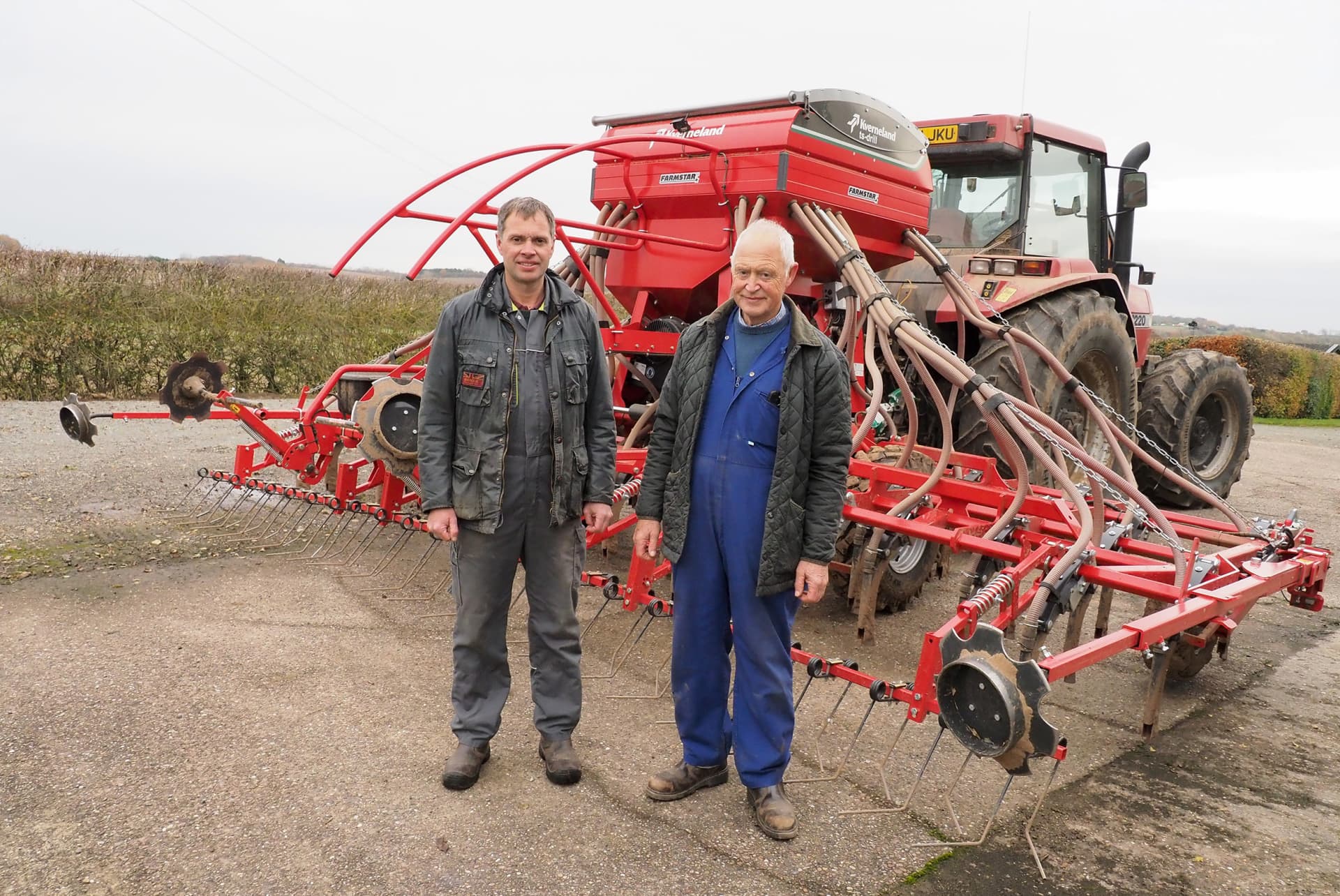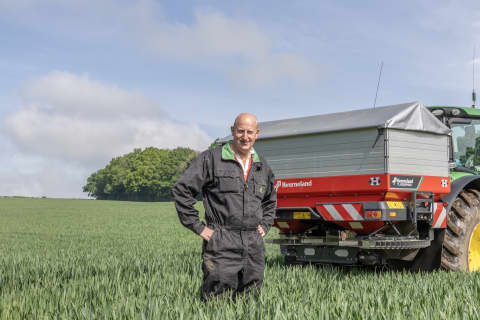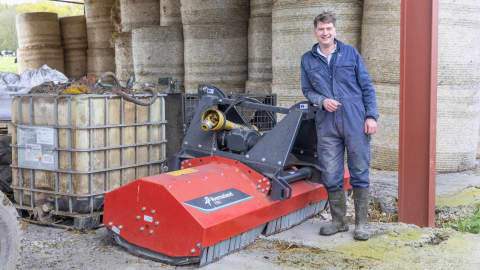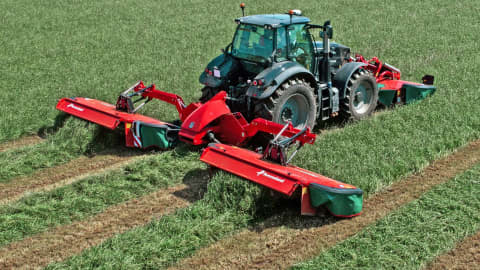Eakring Field Farm is a 138ha arable enterprise on clay loams with soils varying within fields. The focus is mainly on autumn sown crops – first and second wheats, winter barley and oilseed rape.
“Once our soil gets wet, it takes a long time to dry out, so the more we can get done in the autumn, the better,” comments Adrian Cartwright, pictured with his son, Simon.
The farm has recently worked closely with its agronomist to plan a regime that moves away from the plough, as Simon Cartwright explains. “We were ploughing, power harrowing and then combi drilling, and it was a slow, costly process,” says Simon. “As the weather deteriorated, the combi drill would block up, and as we have moved to chopping straw, it was hard to get residues to flow through.”
Having pared back cultivations to a subsoiler and discs, the next step was to find a more versatile drill that could handle a range of conditions, with the option of direct drilling into stubbles. Local dealer Farmstar suggested the ts-drill would be a contender, and equipped with the new low disturbance tine - a 15mm point set at 16.7cm spacings – this meant more stagger and clearance from five rows of tines.
“We had a demo in chopped straw and we could see how the trash flowed through more easily,” recalls Adrian. “The dry autumn in 2022 meant that some of the straw hadn’t broken down even after cultivations, so it was a good test.”
Bought for the 2023 season, the new drill brings plenty of innovation to Eakring Field Farm. “Modern metering systems are a new experience – calibration is simply achieved using the Tellus Go terminal and a measuring bag under the hopper, so it takes five minutes rather than half an hour. And the screen even tells you which cartridge to choose when changing crops,” explains Simon.
The extremely wet autumn has meant the 6m drill has covered little work so far, with the pair pointing out they were able to get back in the field sooner than with a combi drill.
“We planned the hybrid barley for early September but then it came too wet,” he recalls. “Previously we would have had to open up the soil with the power harrow to dry it out before we could go, but we were able to get on with the ts-drill, as soon as it stopped raining. It will also be useful in the spring, as the low disturbance tines will keep the moisture in and prevent soil from drying out too much,” adds Simon.




